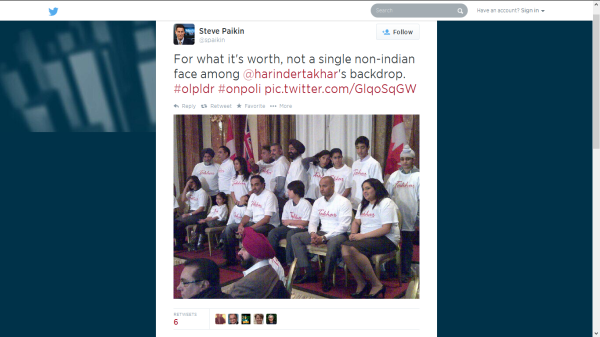How do you court the approval of white voters while trying to make everyone else feel included? In Ontario, you do it very carefully. Our province is home to a large percentage of Canada’s visible minority population, and has received the biggest share of immigrants to Canada for the last 10 years and beyond. But you wouldn’t know it by following our political campaigns.
As Ryerson professor Myer Siemiatycki pointed out in a recent Toronto Star piece, white voters need to believe they are at the centre of political conversations. Politicians seen as giving too much attention to immigrants and people of colour face potential backlash. Immigrants and people of colour are disproportionately struggling in today’s economy, but saying so during an election is risky because it may make white people feel left out. When party leaders do talk about immigrants, the piece illustrates, it is most often to celebrate their vague potential value to the economy.
This dynamic is real, and it only works in one direction. There can never be too much focus on issues that appear to impact middle-class white voters—especially since such voters are rarely named and scrutinized as a group.
Politicians dare not campaign on the health of Ontario’s immigrants, even though many of them are being denied basic health care. They can say little about the disproportionate numbers of black and aboriginal people incarcerated in provincial jails. Our politicians refuse to address these issues directly–they seemingly prefer to pose for selfies with people with dark skin, or turbans, or exotic flags.








